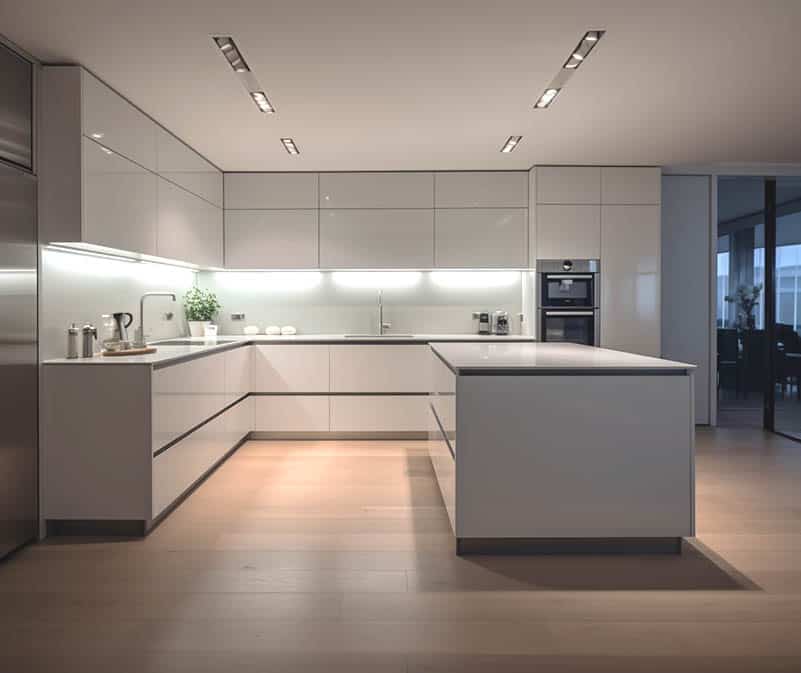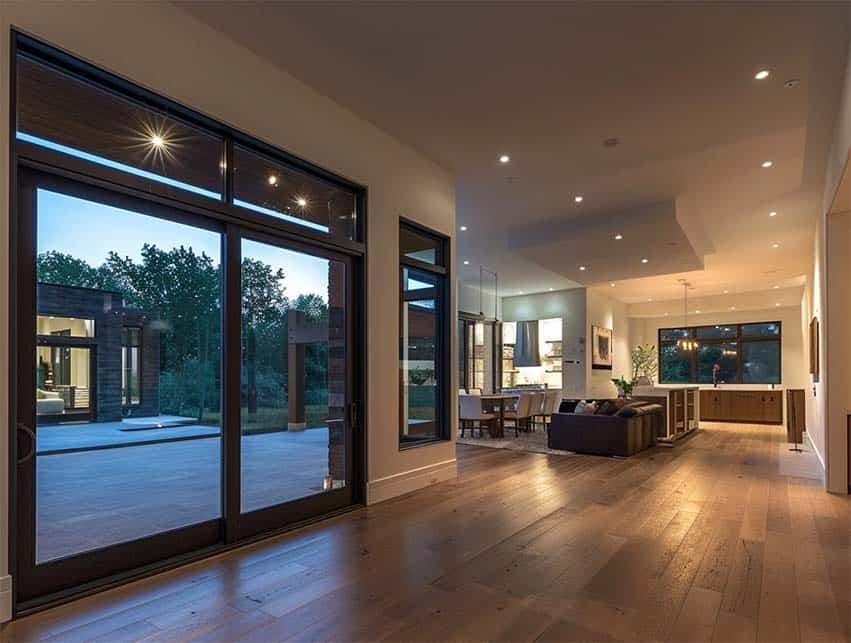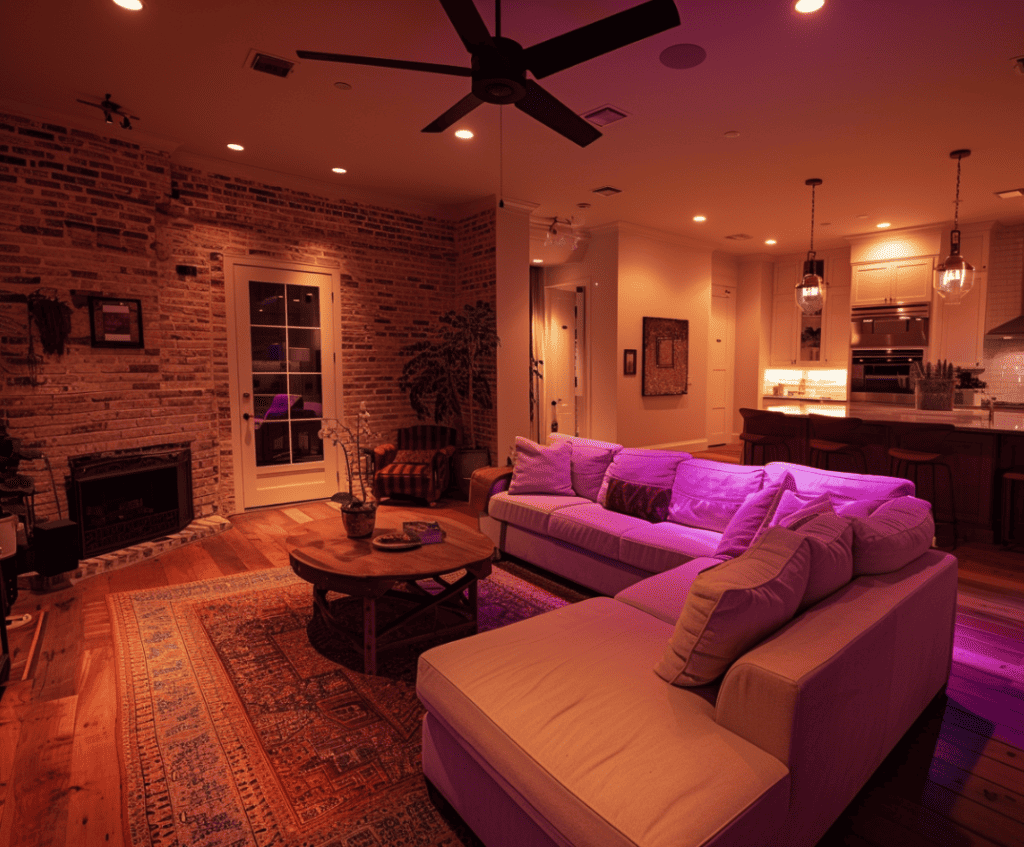KITCHEN LIGHTING INSTALLATION CHALLENGES

Headaches Guaranteed for Non-Electricians
As electrical contractors in San Antonio, TX, we are often consulted by homeowners wanting to remodel their homes and, by the same token, planning a new kitchen lighting installation. In some cases, the homeowners would like to do some of the project themselves.
We do not advise them to do this for a host of reasons, among which the following are real headaches: code compliance and inspections, insurability certification issues, risk of re-work, and most importantly, fire hazard and risk of electrocution.
It is possible for non-professionals to change light bulbs and fix minor things in an electrical circuit. But doing a kitchen lighting installation or remodeling it hides many traps and challenges. In most cases, these will be confounding for non-professionals.
Just to give you examples, we put together a list of 8 categories of challenges and failure points which will be overlooked by most people who are not professional electricians when they start a project.
I. Electrical Safety
A. Live Wires
Working with electricity is inherently dangerous, especially when dealing with live wires. Mistakes can lead to electrical shocks and trigger fires.
For example, if you accidentally touch a live wire while holding a metal tool like a wrench, you risk getting a severe electric shock. If you connect wires incorrectly, don’t be surprised to see short circuits. These cause electrical fires. You don’t want them.
B. Circuit Overload
A new kitchen lighting installation is often the occasion for the owners to add new fixtures. This alone can overload existing circuits if the load capacity of the electrical panel is insufficient. In this case, you either don’t add fixtures (what’s the point of remodeling, then?) or you install a new circuit from the electrical panel.
Why? When you add new lighting fixtures to an existing electrical circuit, you increase the electrical load on that circuit. Each circuit in a home is designed to handle a specific amount of electrical current, measured in amperes (amps).
Overloading a circuit by drawing more current than it is designed to handle creates several problems:
(i) Risks of Circuit Overload
Overheating: The wiring of overloaded circuits overheats, creating a fire hazard. For example, if the rating of a circuit is 15 amps and you are drawing 20 amps, the wires can become hot enough to ignite surrounding materials.
Tripped Breakers or Blown Fuses: Modern electrical panels have circuit breakers designed to trip and cut off the electrical supply if they detect an overload. Older systems have fuses that blow out under similar conditions. We recommend using breakers that trip.
Voltage Drops: Overloaded circuits create voltage drops causing lights to flicker or dim. These drops can also harm sensitive electronic equipment.
(ii) Identifying a Circuit Overload
Amp Calculation: Before adding new fixtures, your electrician calculates the total amps the circuit will need to handle. Light fixtures and appliances usually have their electrical requirements stated on a label or in the manual.
A professional licensed electrician will perform an electrical audit of the circuit to determine if it can handle the additional load. You don’t play with fire.
(iii) Solutions for a Circuit Overload
New Circuit Installation: If an existing circuit cannot handle the additional load, your electrician will install a new circuit. They will run a new wire from the electrical panel to the kitchen, install a new circuit breaker, and sometimes upgrade the electrical panel if already at capacity.
Load Redistribution: Another option consists in redistributing some of the existing load to other circuits. For example, if a single circuit handles both the kitchen lights and the appliances, the electrician will move the appliances to a different circuit to make room for more lights.
Upgrade of an Existing Circuit: In some cases, the electrician will decide to upgrade the existing circuit to handle a higher load, and replace the wire with a higher gauge and install a higher-capacity circuit breaker. This is often more complicated than not, and professionals generally prefer to create a new circuit (depending on local building codes).
Use of Energy-Efficient Fixtures: Using energy-efficient LED fixtures helps mitigate the risk of circuit overload as LEDs consume less electricity than traditional incandescent and halogen bulbs.
II. Regulatory and Code Compliance
A. Building Codes
Local building codes often have specific requirements for kitchen lighting installations. For instance, some codes may require a certain type of light fixture over the kitchen sink or mandate the use of GFCI outlets. Failure to comply can result in failed inspections and the need for revisions (additional costs).
B. Permits
Many jurisdictions require specific permits for specific electrical work. Obtaining the right paperwork usually submitting a detailed plan of the proposed work and may require one or several inspections. If permits are required, skipping this step is not wise… unless you like fines and the potential for legal issues.
III. Technical Challenges
A. Wiring Complexity
Kitchen lighting installations typically use multiple light sources: overhead lights, under-cabinet lighting, pendant lights, under-countertop lights, etc. Each source requires separate wiring, junction boxes and switches, making the wiring diagram more complex.
B. Switch Placement
Deciding where to place switches can be a challenge: where it is more convenient to have this switch? Is this code-compliant? For example, placing a switch inside a pantry might be convenient but does it violate your local building code?
C. Compatibility
New fixtures must be compatible with existing wiring and electrical boxes. For example, some modern LED fixtures may require a specific type of dimmer switch compatible with low-voltage lighting. This is usually indicated on the product box but if you order a product online, that may not be shown on the seller’s website.
IV. Aesthetic and Design Issues
A. Lighting Design
Achieving the right balance between task lighting and ambient lighting is challenging. A professional electrician will have seen hundreds of configurations, and will help making the right call for the space. This doesn’t mean the owners have no say in their kitchen lighting installation. Not at all!
For example, an open space kitchen and living room may need bright, focused lighting above the countertop for preparing food; softer, more diffuse lighting for dining; and a few LED strip lights hidden in the tray ceiling to highlight this architectural feature. The electrician will present possibilities, all well-balanced and not competing with each other. The final decision and desired changes rest in the hands of the homeowners.
B. Fixture Selection
Choosing fixtures that match the kitchen’s overall design theme is an aesthetic challenge. Typically, a professional electrician will listen to the general ideas of the homeowners, and come up with manufacturer catalogs to show matching fixtures.
The owners may also have seen specific fixtures in a store or online. If they don’t have a way to shop for them in a retail store or online, the electrician will help by checking what is on offer on the shelves of wholesalers.
V. Cost
A. Labor and Material Costs
High-quality fixtures and skilled labor are expensive. Hiring a certified electrician can easily cost $150 an hour. High-end fixtures can run into the hundreds of dollars each.
B. Unexpected Costs
It is very frequent in older homes to stumble on surprises. Typically, a change of ownership in the history of the house will have been followed by some form of remodeling. The work may have been performed by non-professionals, and the electrical installation of the house may already have been violating several evolutions of applicable codes.
These situations can’t usually be solved by anything else than rewiring, upgrading the old panels, installing 3-prong outlets, and in general, cleaning up the old mess. This increases the project cost, sometimes significantly. For instance, a new electrical panel can cost upwards of $1,200.
A professional electrician will do an inspection of the house before starting to work on the design of the new kitchen lighting installation. They will detect the issues early on, and present the owners with the available options. Non-professionals will not see the issue before they stumble upon them, and see their budget drift.
VI. Time Constraints
A. Project Delays
Waiting for inspections or custom-ordered parts will extend the timeline of a project. We have seen custom lighting fixtures take 6-8 weeks to be delivered, just because they were one-of-a-kind pieces and the artist or manufacturer was backlogged.
During and after the pandemic, it was impossible to complete any project on time because the supply chains had been so disrupted that the materials were just not coming to ports and shelves.
These problems can’t be remedied by an electrical contractor, naturally. But they can be “planned in”, so that homeowners know in advance their desired timeline is likely to be extended.
B. Coordination
If the kitchen lighting installation is part of a larger kitchen renovation project, a professional electrician will work in tight coordination with other contractors like plumbers, carpenters and painters. All professionals have a very good idea of what the other trades require in terms of time and preparation work, so proper coordination happens naturally. This tends to avoid unnecessary delays.
VII. Power Usage Concerns
A. Energy Efficiency
Older homes are equipped with fixtures that are typically not very energy-efficient. Professional electricians will most often recommend their clients to upgrade their installation and fixtures to higher standards of efficiency.
When they calculate the load requirements of a home, electrical contractors think in terms of power consumption and automatically figure out ways to improve on it. Considering the rising cost of electricity, this is in no way trivial.
VIII. Accessibility
A. Ceiling and Wall Access
In some cases, the electrician needs to open up walls and ceilings to reroute or install new wiring. This adds complexity to the project, and requires additional repair work (patching and painting).
Kitchen Lighting Installation: Planning is everything
When the team of licensed electricians at All Star Electric plans a kitchen lighting installation project, these are the challenges and obstacles we are fully prepared for. The inspection phase enables us to spot the issues to be remedied. Our professional contacts give us a view of the availability of the electrical supplies we need. We will work in coordination with other trade professionals participating in the project.
Nothing replaces training, knowledge, and experience. This is why no licensed electrician will ever advise non-professionals to undertake themselves a project of such magnitude as a kitchen lighting installation or remodeling.
All Star Electric has almost 30 years of experience as electrical contractor In San Antonio. We bring all this experience to your project for its final success: staying with budget and timeline is one of our two major commitments. The other one is to deliver high quality electrical work, backed up with a 2 year warranty. Call us at (210) 391-0274 to discuss any electrical installation project you have in mind for your home.
Other resources
Read more about All Star Electric’s general lighting installations
All Star Electric works on kitchen and bathroom remodeling projects




























